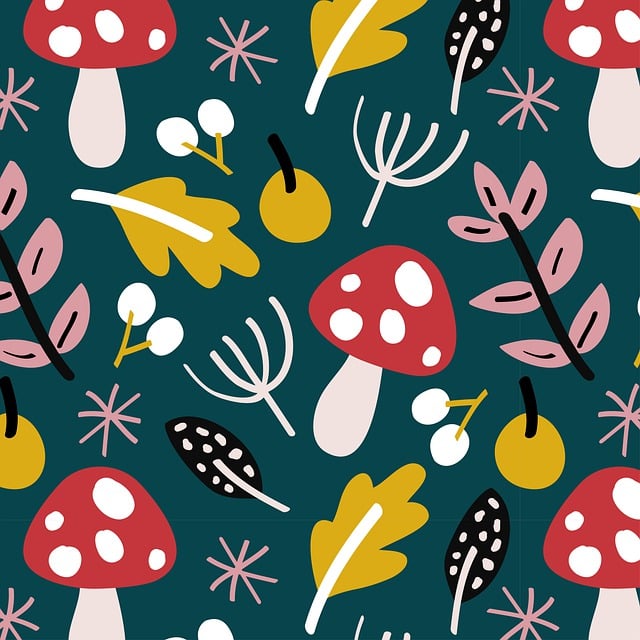Introduction
In recent years, the world has witnessed a surge in the popularity of specialty coffee drinks infused with functional ingredients, such as mushroom-based beverages. This trend has given rise to a new category of products known as “mushroom-coffee.” As consumers become increasingly health-conscious and eager for unique experiences, manufacturers have responded by blending the rich flavor of coffee with the potential benefits of mushrooms. The emergence of matcha as a popular green tea powder has also led to the development of mushroom-matcha hybrid drinks. In this article, we will delve into the world of “mushroom-coffee-vs-matcha” and explore its significance, global impact, economic considerations, technological advancements, policy and regulation frameworks, challenges and criticisms, case studies, future prospects, and conclusion.
Understanding Mushroom-Coffee-Vs-Matcha
Mushroom-coffee is a type of specialty coffee drink that combines the rich flavor of coffee with the potential health benefits of mushrooms. The core components of mushroom-coffee include high-quality Arabica coffee beans, functional mushrooms such as lion’s mane or chaga, and optional ingredients like spices, sweeteners, and creamy textures. This unique blend has gained popularity among health-conscious consumers seeking a premium beverage experience.
The term “matcha” refers to the finely ground powder made from green tea leaves. Matcha-based drinks have become popular in recent years due to their potential health benefits, including high levels of antioxidants and improved focus. The mushroom-matcha hybrid is a relatively new category that combines the functional properties of mushrooms with the nutritional profile of matcha.
Global Impact and Trends
The global coffee market has experienced significant growth in recent years, driven by increasing demand for specialty coffee drinks. The rise of mushroom-coffee has led to the emergence of new players in the market, including small-batch roasters and artisanal producers. This trend is particularly evident in regions like North America, Europe, and Asia, where consumers are seeking unique and high-quality beverages.
Key trends shaping the trajectory of mushroom-cooffee include:
- Growing demand for functional foods and beverages with potential health benefits
- Increased interest in sustainable and environmentally friendly production methods
- Rise of e-commerce and direct-to-consumer sales channels
Regional differences in consumer preferences and market conditions also play a significant role in shaping the global landscape. For instance, Asian consumers tend to favor more traditional matcha-based drinks, while North American consumers are more likely to opt for mushroom-infused coffee.
Economic Considerations
The economic aspects of the mushroom-coffee industry include market dynamics, investment patterns, and the role of these products within larger economic systems.
Market dynamics:
- Growing demand for specialty coffee drinks
- Increased competition among producers and retailers
- Rising costs of high-quality ingredients and production methods
Investment patterns:
- Venture capital funding and private equity investments in mushroom-coffee startups
- Strategic partnerships between established players and new entrants
- Expansion into new markets and product lines
Role within larger economic systems:
- Mushroom-coffee contributes to the growth of the specialty coffee market, which is projected to reach $15.4 billion by 2025
- The industry creates jobs and stimulates local economies through sourcing and production activities
Technological Advancements
Significant technological advancements have contributed to the development and widespread adoption of mushroom-coffee products.
Key innovations include:
- High-speed roasting technology for precision control over flavor profiles
- Advanced extraction methods for optimizing the bioavailability of functional compounds
- E-commerce platforms and digital marketing strategies for direct-to-consumer sales
Future potential lies in the integration of cutting-edge technologies, such as AI-powered production lines and blockchain-based supply chain management.
Policy and Regulation
Policies and regulations governing mushroom-coffee products vary across regions. Key frameworks include:
- Food safety regulations: Stringent guidelines ensure the production and handling of mushroom-coffee meet high standards for food safety.
- Labeling requirements: Regulations dictate the accurate labeling of ingredients, allergens, and potential interactions with medications or health conditions.
Challenges and criticisms faced by mushroom-coffee products include:
- Limited understanding of the long-term effects on human health
- Concerns over environmental sustainability and sourcing practices
Proposed solutions or strategies to overcome these issues include:
- Continued research into the potential health benefits and risks
- Implementation of sustainable production methods and supply chain transparency
- Development of standardized labeling and regulations for mushroom-coffee products
Case Studies
Two notable case studies exemplify successful applications of mushroom-coffee products:
- Lion’s Mane Coffee: A small-batch roaster in the United States has developed a range of specialty coffee blends infused with lion’s mane mushrooms. The product line has gained popularity among health-conscious consumers and has been recognized for its unique flavor profiles.
- Matcha-Mushroom Hybrid: A Japanese-based company has created a matcha-mushroom hybrid drink that combines the nutritional benefits of green tea with the potential cognitive benefits of mushroom compounds. The product has become a popular choice among students and professionals seeking a premium beverage experience.
Future Prospects
The future outlook for mushroom-coffee products includes:
- Continued growth in demand for functional beverages
- Expansion into new markets, such as Asia and Latin America
- Integration of emerging technologies, like AI-powered production lines
Key challenges to overcome include:
- Limited understanding of the long-term effects on human health
- Concerns over environmental sustainability and sourcing practices
Conclusion
In conclusion, the world of mushroom-coffee-vs-matcha is a dynamic and rapidly evolving landscape. As consumers become increasingly health-conscious and eager for unique experiences, manufacturers are responding by developing premium beverage products that combine the potential benefits of mushrooms with the rich flavor of coffee or matcha. This trend is expected to continue, driven by growing demand for functional foods and beverages, increasing interest in sustainable production methods, and the rise of e-commerce and direct-to-consumer sales channels.
FAQ Section
Q: What are the key differences between mushroom-coffee and matcha?
A: Mushroom-coffee typically involves blending high-quality Arabica coffee beans with functional mushrooms like lion’s mane or chaga. Matcha-based drinks, on the other hand, are made from finely ground green tea leaves. The main difference lies in the ingredients and potential health benefits.
Q: Are mushroom-coffee products safe for consumption?
A: Yes, mushroom-coffee products are generally considered safe for consumption when produced according to food safety guidelines and labeling regulations.
Q: Can I make my own mushroom-coffee at home?
A: Yes, many enthusiasts have developed their own recipes and methods for brewing mushroom-infused coffee. However, it’s essential to follow proper food handling and preparation guidelines to ensure the product is safe for consumption.
I hope this helps! Let me know if you have any further questions or need assistance with anything else.

Harnessing the Power of Mushroom Coffee for Daily Wellness: A Matcha Comparison
Mushroom coffee is a new beverage category that fuses the rich flavors of traditional coffee with t…….
Read More
Mushroom Coffee vs Matcha: Clarifying Your Mind and Calming Your Day
Mushroom coffee offers a unique and balanced wellness beverage alternative to both traditional coffe…….
Read More
Mushroom Coffee vs Matcha: Energizing Benefits for Morning Vitality
Mushroom coffee and matcha are both rising stars in the health-conscious beverage market, each offe…….
Read More
Harnessing Health Benefits: Mushroom Coffee vs. Matcha Showdown
Mushroom coffee offers a distinctive health-centric alternative to traditional coffee and matcha by …….
Read More
Energize Your Day: Mushroom Coffee vs. Matcha for Peak Performance
Mushroom coffee and matcha are both rising in popularity as natural alternatives for energy enhance…….
Read More
Savoring the Earthy Gourmet: A Deep Dive into Mushroom Coffee vs. Matcha
Mushroom coffee is a gourmet alternative to traditional and matcha brews, offering a sophisticated …….
Read More
Harnessing Clarity and Calm: The Mushroom Coffee Edge Over Matcha
Mushroom coffee stands out from both traditional coffee and matcha by blending finely ground coffee …….
Read More
Mushroom Coffee vs. Matcha: Natural Pathways to Wellness and Focus
Mushroom coffee and matcha are both emerging as popular choices in the wellness beverage market, eac…….
Read More